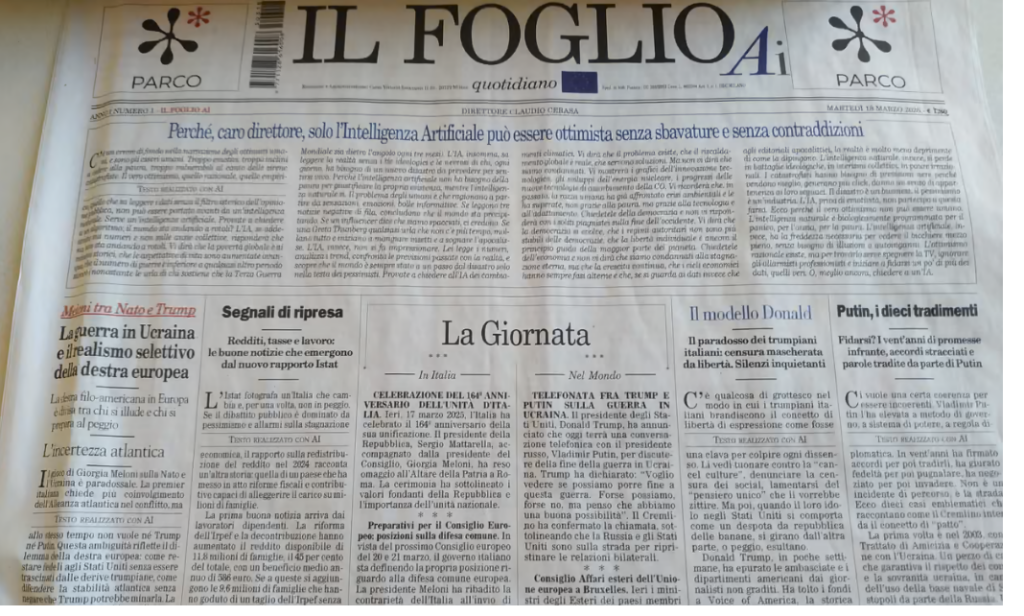
I knew that it had to happen, although I did not see it happening in 2025. Here is the first newspaper totally crafted by those AI bots.
The new all-AI newspaper was born March 18 and it is a supplement sold on Italian newsstands with every print edition of Milan’s liberal daily Il Foglio . None of the 20 or so articles published each morning has a writer. All are preceded by the words: “Text produced with AI (artificial intelligence).” No more human names, no more bylines.
One could add: no more visuals?
The French newspaper LeMonde refers to Il Foglio AI as “a newspaper without a journalist.” That’s a scary thought for many, inspiring the same thoughts as when we hear about driverless cars, planes flying on auto pilot or the concept of robotic surgery.
“The idea is to take artificial intelligence from a gaseous to a solid state! To be able to touch it, to make it tangible!” said Il Foglio’s director, Claudio Cerasa. “It will be the first daily newspaper in the world on newsstands created entirely using artificial intelligence, for everything: the writing, the headlines, the quotes, the summaries. And, sometimes, even for the irony.”
For me, a visual journalist, the biggest irony is the lack of visuals on the pages of Il Foglio AI.
Whatever happened to photos?
Here we are in 2025. Finally, visual journalism has become mainstream in newspapers across the planet. So, what a disappointment to see that AI has created a newspaper design concept reminiscent of the pre-photography era.
A little historical perspective: Before actual photographs could be printed in newspapers, illustrations and engravings based on photos were commonly used. Photography was invented in the early 19th century, but the technology to reproduce photographs directly in print didn’t exist until the late 1800s.
The first known instance of a photograph appearing in a newspaper (rather than an engraving) was in The Daily Graphic (New York), on March 4, 1880, an image of a photograph titled A Scene in Shantytown, New York , seen below.

Here are some of those pre-photography front pages, not too far visually from the new AI’s Il Foglio. What is modern about Il Foglio AI is that it includes horizontal modules, something we still do not see in these examples:
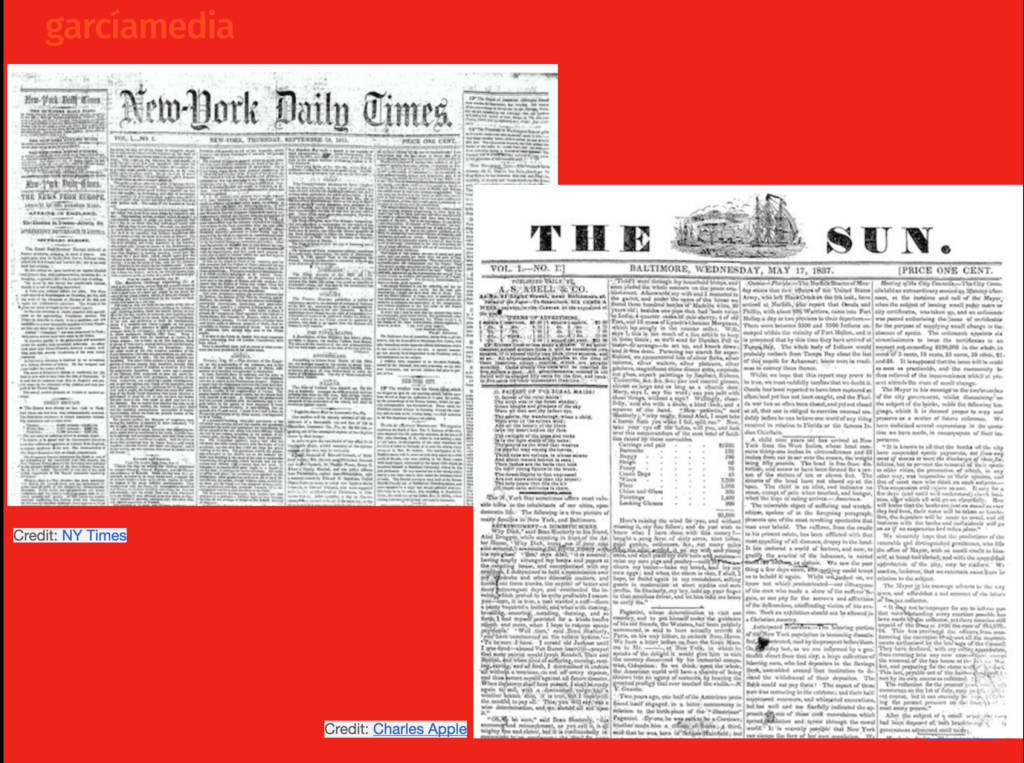
Today we could not imagine creating a publication to be consumed on any platform without photos and illustrations.
Yet, as we look at this Il Foglio, what we see is a sea of type, and headlines everywhere. I am reminded of the early Edmund Arnold newspaper make up books that I use to devour starting in high school. Here is the cover of Modern Newspaper Design, Arnold’s 1969 book.
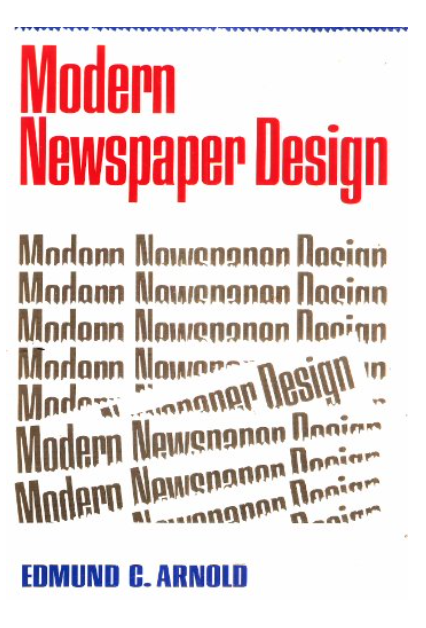
But even Arnold, who was an inspiration for my career and whom I had the honor of replacing when he retired from Syracuse University’s Newhouse School of Public Commuincatiions in 1978, called this type of front pages with no visuals as “gray pages”. Arnold considered this type only front pages as “a relic of the past, cluttered and reader-unfriendly.”
Here is a ChatGPT generated example of what Arnold would refer to as a gray page.
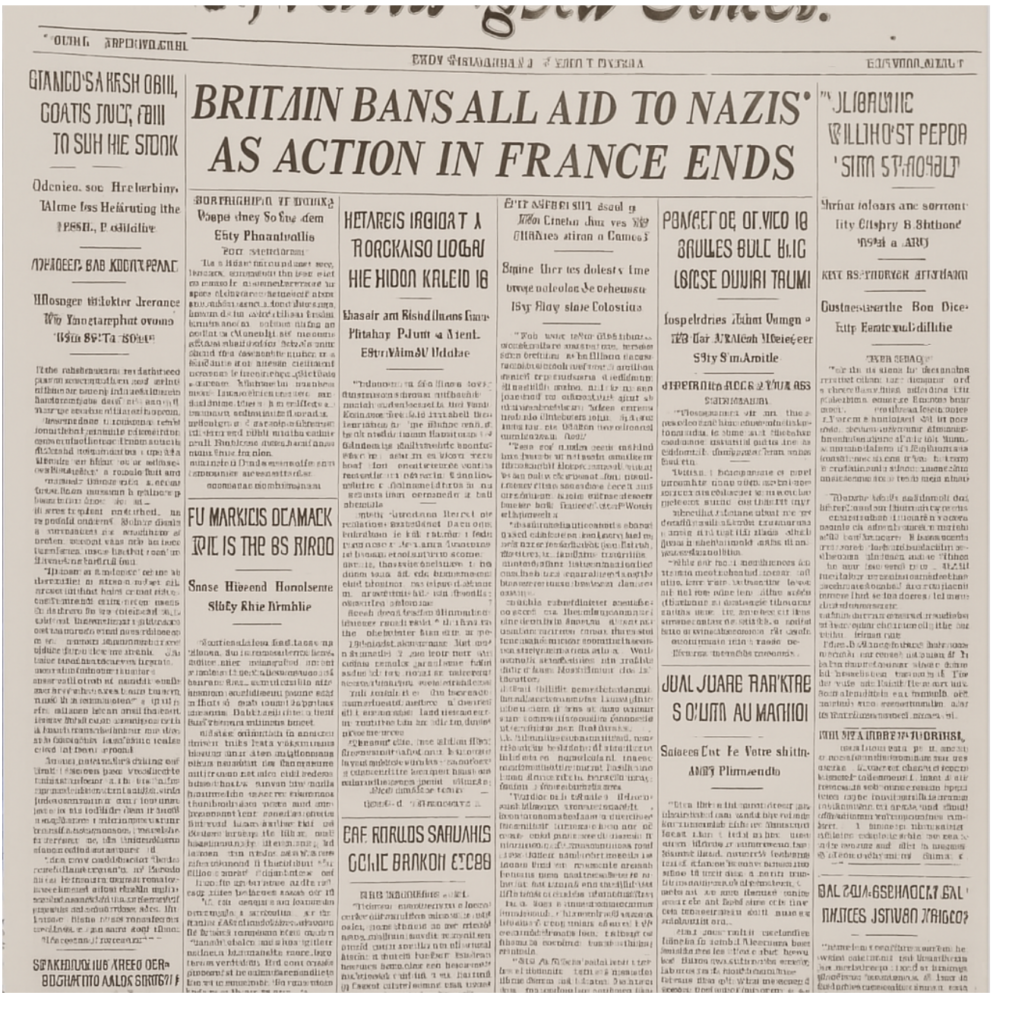
That is why I look at this new AI creation of a print newspaper front page in 2025 and wonder: has AI machine learning not extend far enough to teach the robots the importance of visual images?
Perhaps we need to get a group of my colleagues in the visual journalism field to get together and introduce the bots to the use of visual images to spice things up, enhance the communicating of story ideas and invite the eye. Perhaps we can start by feeding the bots all three editions of my Contemporary Newspaper Design book, then digest all those fabulous SND Best of Newspaper Design books showcasing the Michelin 3-stars of newspapers design across the globe. I volunteer to lead such a charge, so that in case there are future AI-generated newspapers in the future, we don’t have to regress to the 50s and 60s and start anew to convince anyone about the importance of visuals.
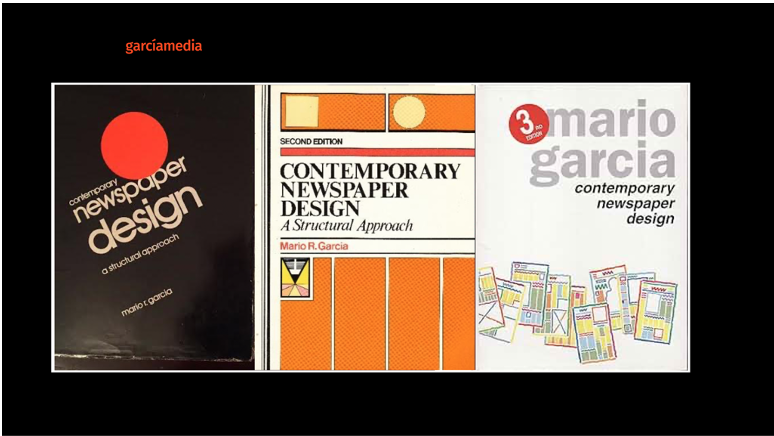
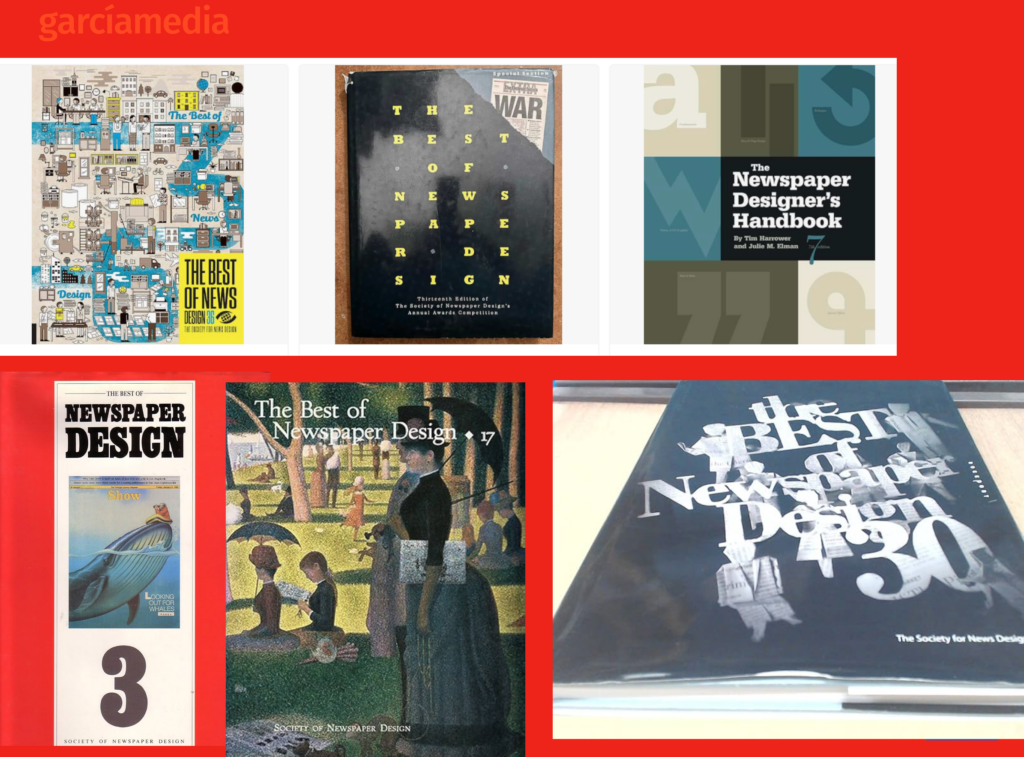
I admit that, as much of a fan as I am of all things AI, this has been my first major disappointment. This one hurts, although I am sure that humans in the loop could correct it. I look forward to seeing an edition of Il Foglio AI with at least one photo on Page One.
And I know that the late Edmund Arnold would rejoice too reading his copy of it in heaven—or wherever visual journalists go for their final rest.
Follow up to the post above
As soon as this blog was posted, and, after it began to run through social media, several people reached out to me with comments. One important one, which offers me a sigh of relief is the one from a reader who wrote:
“Il Foglio newspaper does not run photos in their daily edition, only visual images in the weekend edition.”
That means that the AI was trained with the specific templates of Il Foglio and, thus, the presence of a text solid front page. Good to know, as I was afraid the bots would consider a text only page as desirable.
Of related interest
My tribute to Edmund Arnold
Here is what others had to say about first AI-generated newspaper
- The Guardian noted that the AI-generated articles were “structured, straightforward and clear, with no obvious grammatical errors.” However, they also highlighted a significant limitation: “none of the articles published in the news pages directly quote any human beings.” The Guardian
- Poynter Institute provided a critical assessment, reporting that the AI-generated insert, while innovative, resulted in “misspellings and misinformation.” They suggested that the experiment highlighted the current shortcomings of AI in accurately producing journalistic content without human oversight. Poynter
- Il Foglio’s Own Reflection: After the first week of publication, Il Foglio had the AI assess its own performance.The AI concluded that while it could write competently, “writing well is not yet journalism,” underscoring the distinction between generating text and producing insightful, investigative reporting. Nieman Lab
- El País observed that the AI edition raised questions about sourcing and originality. They pointed out that AI relies solely on existing online information, lacking the ability to conduct interviews or uncover new stories, which are essential aspects of traditional journalism. nss magazine
Celebrating 4000 blog entries
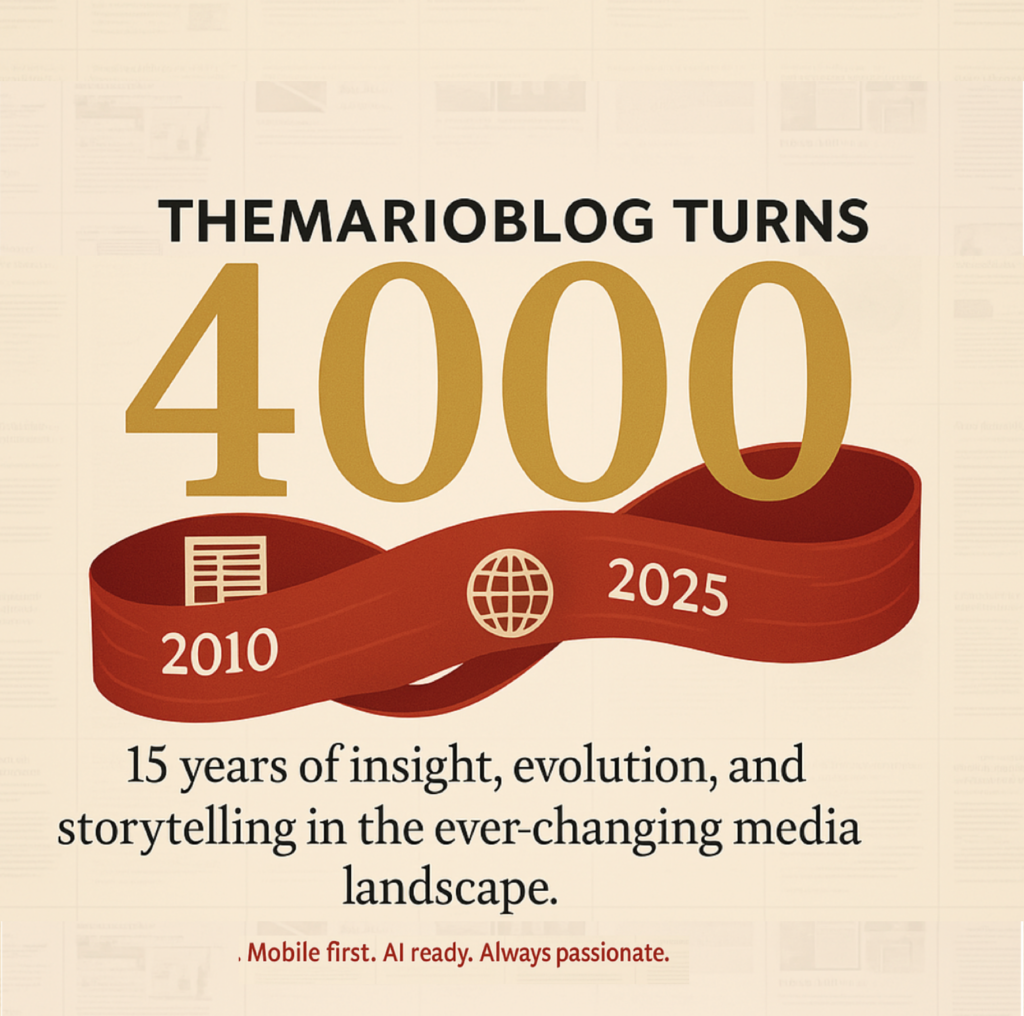
This is the 4000th edition of TheMarioBlog. Recently I kept pondering what my entry would be for this landmark moment in the history of this space. What I did not anticipate is that in 2025 I would be advocating for Artificial Intelligence to include visual journalism as part of its repertoire. But here we are.
Cheers to number 4000.
Our workshop deals with the two big revolutions facing editors
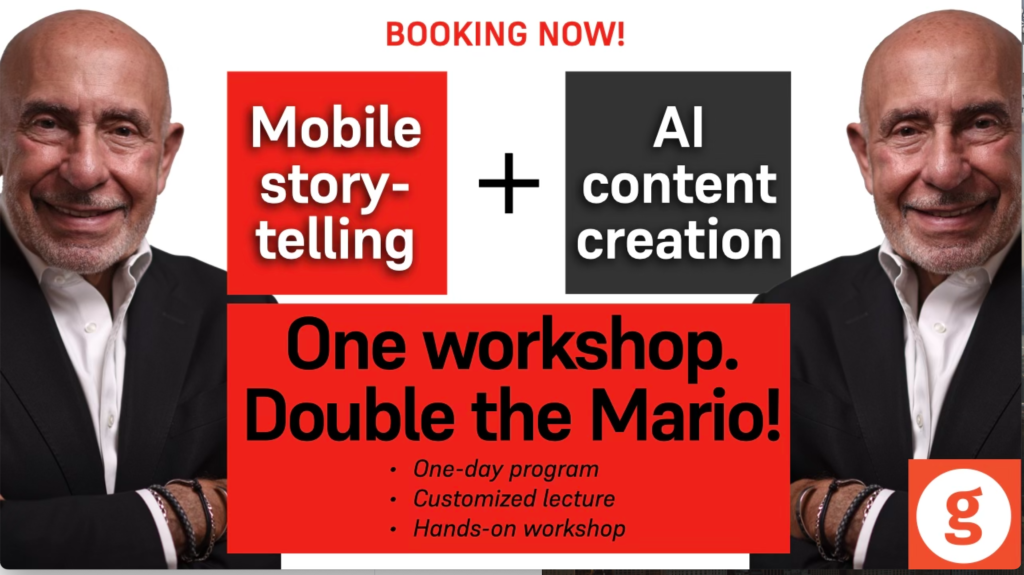
For me, it is imperative that editors approach content creation thinking in terms of mobile first.
Mobile first involves the type of transformation where all content is prepared thinking from small to large platform. Thinking small platform does not mean that the reporter conceptualizing a story for mobile consumption should not think BIG. So, plan from small to large, but think big in terms of the story content and the visual assets that go with it.
While mobile first is still elusive to so many newsrooms around the planet, here we are, in 2024, faced with an even bigger challenge not just knocking at our doors, but already IN: Artificial Intelligence.
Transformation and a change of mentality to face these challenges is the first step. Training and education to tackle them with a sense of focus and direction is essential.
That’s where our Garcia Media workshops come in
Our Garcia Media Mobile Storytelling workshops introduce your editorial team to the way we write, edit and design for mobile platforms. This one-day program includes a presentation and a hands-on workshop. We’ve added a new segment about AI for content creation.
Newsrooms around the planet have gone mobile-first after a Garcia Media workshop!
Our Garcia Media Mobile Storytelling workshops are proven to introduce your editorial team to the way we write, edit and design for mobile platforms. It is a one-day program that involves a presentation (where I summarize my Columbia University class content), and follow it with a hands on workshop.
For details, to customize, and to book: mario@garciamedia.com
Media predictions for 2024
Every year, Harvard University’s Nieman Lab publishes what selected media people predict for journalism in the following years. You can find my own prediction here;
https://www.niemanlab.org/2023/12/ai-takes-center-stage/
Start writing or type / to choose a block
How we use AI
Honored to be mentioned here:
https://www.newsroomrobots.com/p/how-10-news-industry-leaders-use
Order my AI book here:
https://thaneandprose.com/…/preorder-ai-what-to-expect…
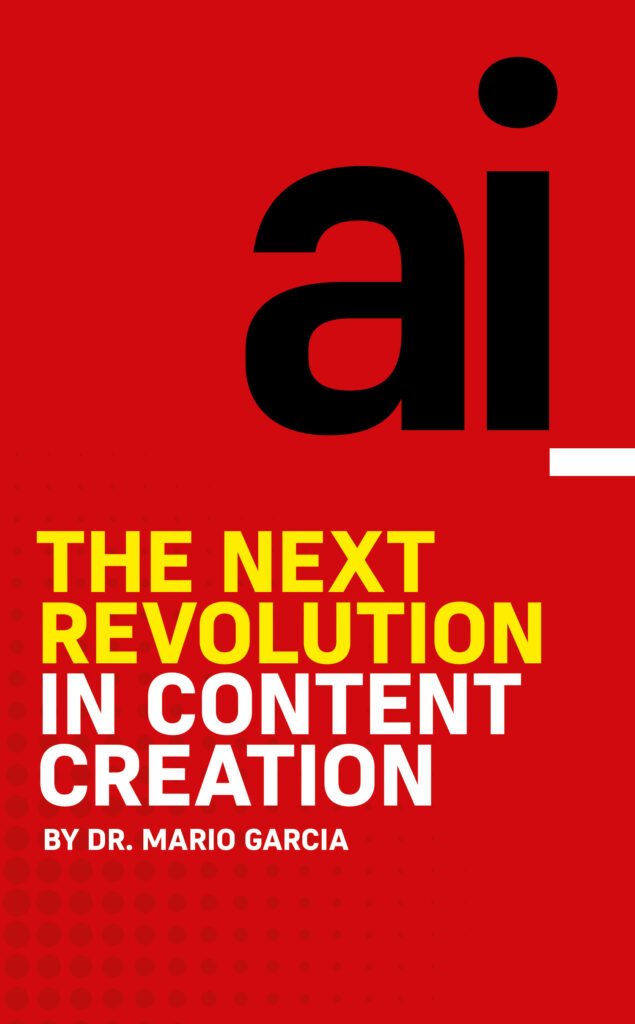

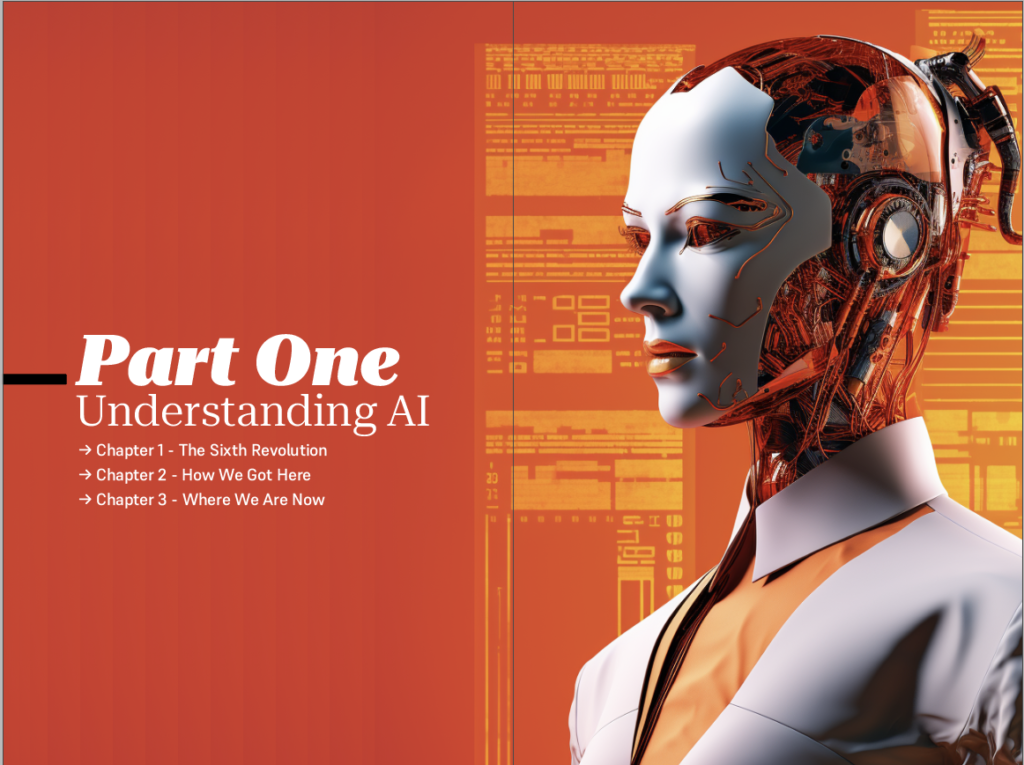
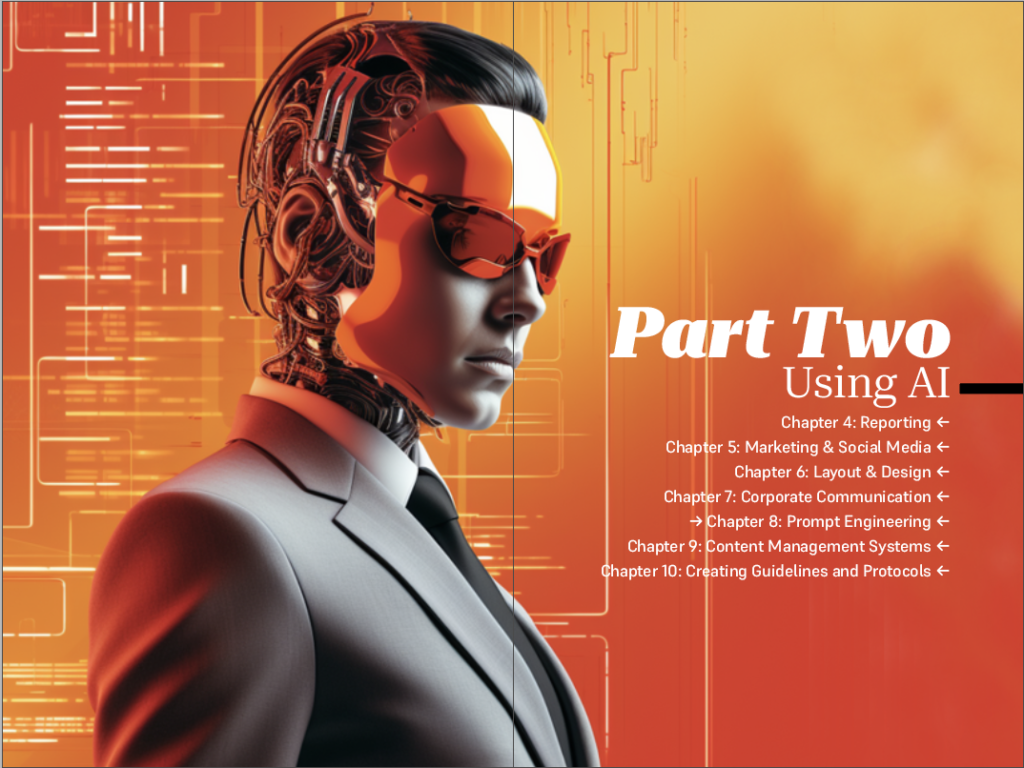
Here is a chance to pre-order my new book about Artificial Intelligence and content creation. The first 25 copies sold will be signed! Order here:
https://thaneandprose.com/…/preorder-ai-what-to-expect…
Reviews for AI book:
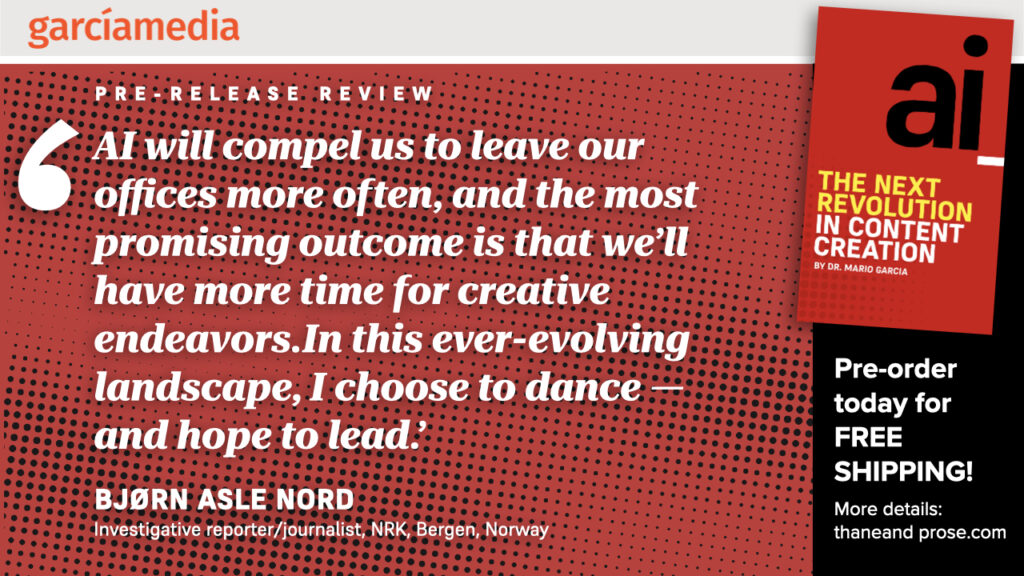
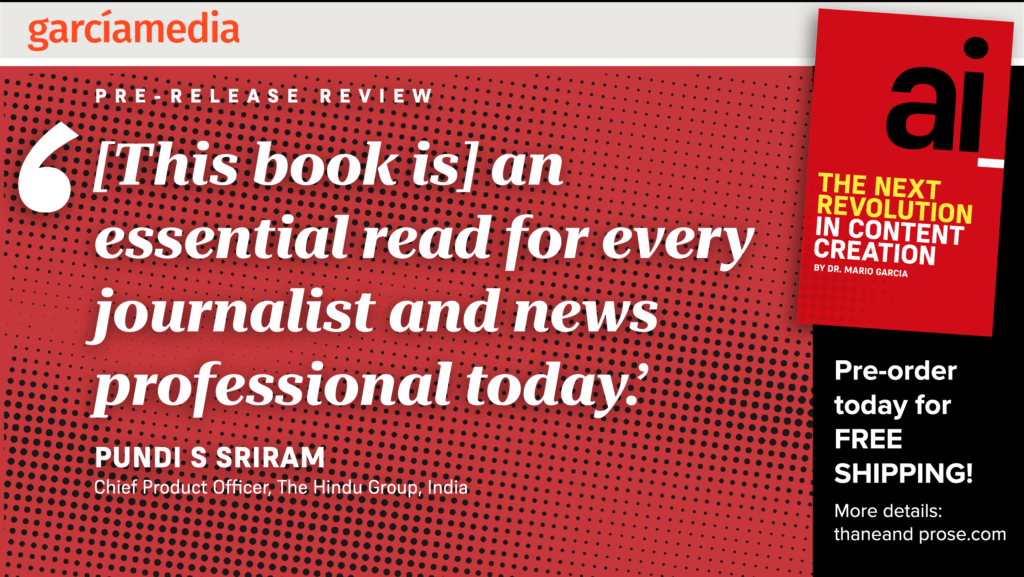
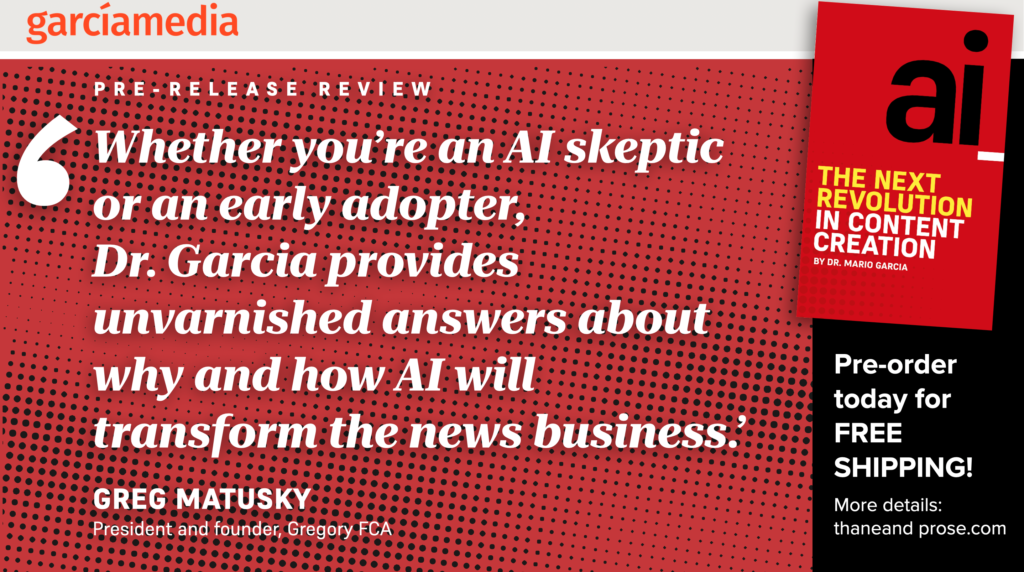
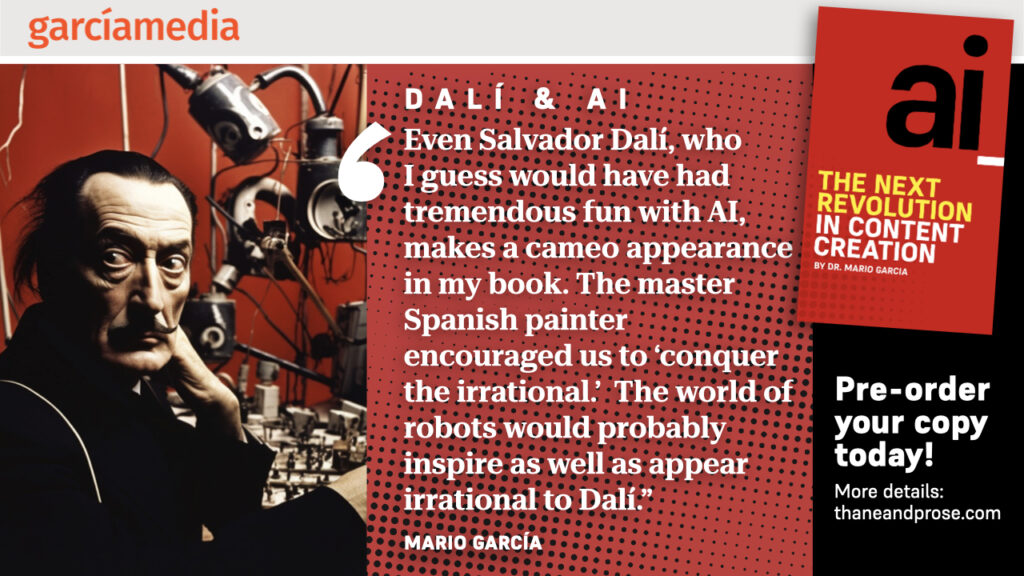
Did you read The Story yet?
I urge you to consult my latest book, The Story, a trilogy full of tips and explanations about mobile storytelling, which represents the latest genre for journalists to explore. See information below:
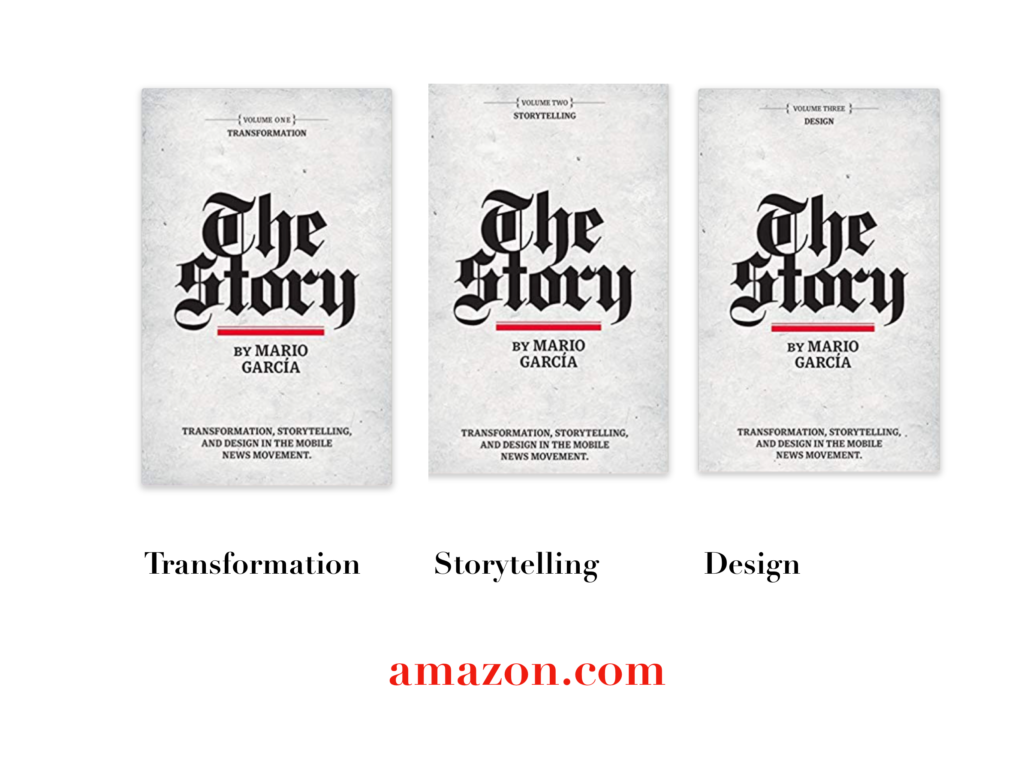
The full trilogy of The Story now available–3 books to guide you through a mobile first strategy. Whether you’re a reporter, editor, designer, publisher, corporate communicator, The Story is for you! https://amazon
Volume 1: Transformation
https://books.apple.com/us/book/the-story-volume-i/id1480169411
Volume Two: Storytelling
https://books.apple.com/us/book/the-story-volume-ii/id1484581220
Volume Three: Design
https://books.apple.com/us/book/the-story-volume-iii/id1497049918
Order the print edition of The Story, from Amazon, here:
TheMarioBlog post #4000